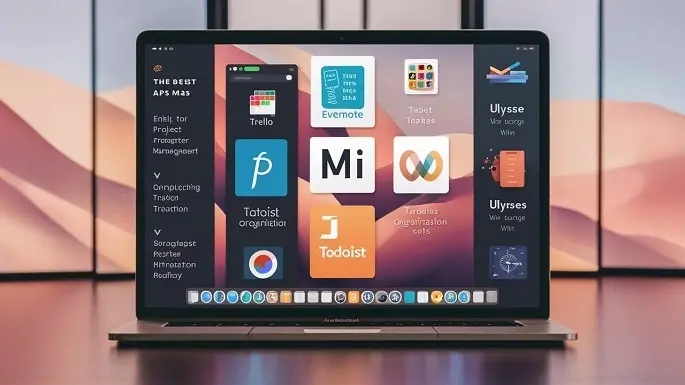What Is the 2-2-3 Work Schedule?
The typical way of working has been the 9-5 work, from Monday to Friday for many years in the working world. However, in the past few years, many business organizations have started trying out flexible work schedules to help their employees have more flexible working times and, therefore, might be more productive. Of all the recommended schedules, one that has been found to work for some employers is what is referred to as the 2-2-3 schedule.
A 2-2-3 schedule is a teaching model in which there are two whole-group lessons, two small-group lessons, and then three whole-group lessons.
A 2-2-3 schedule means workers spend:
- In practical work, one will spend 2 days in the office.
- 2 days using home home-based connection
- 3 days off
Therefore, in a week of work, an employee would work on Monday and Tuesday. The following day they would arrange for them to work from home on Wednesday and Thursday in case they fall sick. Friday through Sunday they’d have off work completely; Monday would be just half a day and the rest of the week they would have just to attend meetings. After this 2-2-3 cycle would be continued the following week as well.
The schedule provides structure because there is a clear split between days that require the employees to be in the office and days that allow them to work from home. The main advantage is employees get the weekend off to have three full days of rest each week. It affords them a better chance at relaxation, chores, shopping, and recreational activities without frequent calls from work.
How a 2-2-3 schedule is effective in making work-life balance manageable?
In the same regard, one of the most appealing advantages of the 2-2-3 model is that work-life balance is predetermined by the model. Since many workers in the United States have to work five days a week, from Monday to Friday, the three consecutive days off remove the daily pressure that employees experience when attempting to balance their chores at home and other personal pursuits with the rigors of the workplace.
Possible attributes of the 2-2-3 scheduling include one can schedule important meetings and appointments, attending to family businesses, doing time-consuming errands, or just resting and rejuvenating during the three-day weekend. They can also leave town and be out of sight more often The invention of cars also allows them to move around more freely.
Less total commute days also help conserve time among employees and help reduce the time spent in preparation and getting ready for work each day. The other advantage of having two days a week to work from home is that it eliminates the need to commute on those particular days, which is a loss of the employee’s time as well as fuel or other transportation expenses.
A more ideal work-life balance also leads to reduced cases of burnout and increased well-being of employees. For this reason, happier workers are often reported to be more dedicated, committed, and hardworking at their place of work.
The 2-2-3 approach helps in building trust and encourages flexibility in the workplace.
For 2-2-3 to be effectively implemented, organizations ought to have the technological means to support remote working patterns. But arguably more critical is ensuring that leadership teams create the necessary culture of flexibility and a trusting environment in the workplace.
Managers can delegate supervisory responsibilities and have their employees work from home for two days a week. Hence we see the schedule encourages enhanced independence and self-direction among employees. you can track employees using the Remote Team Management tool that monitors employee working hours, activity, and much more.
Workers can also learn how to structure their working day from home depending on their oscillatory rates – whether it’s waking up early in the morning to deal with challenging tasks when there are no interruptions or doing all the chores around during the time they are least productive.
However, it is important to note that the 2-2-3 model is not appropriate for all positions or organizational cultures, but where the management style is fairly decentralized and based on interpersonal collaboration rather than hierarchy and imperative, then the model is likely to work effectively.
In its current state, the 2-2-3 scheduling system may not directly benefit businesses as much as it can hinder them from achieving productive outputs as stated below.
So in addition to enhancing work-life quality for employees, how can 2-2-3 working be used productively by organizations? When successfully implemented, the unique schedule allows companies to:
Recruit the best-fit employees who seek time flexibility and work-from-home opportunities thereby enhancing the overall quality of life.
Be able to utilize less overall square footage required for employees and decrease operating expenses of facilities per day.
Reduce geographic barriers for candidates that were previously unable to apply for positions due to distance and therefore extend the talent pool and the number of opportunities for recruiting the best candidates.
Increase efficiency by providing employees with large chunks of uninterrupted work time throughout telework days
Sustain business operations in calamities such as bad weather, diseases like Ebola, or any other mishap that may affect the operation of office blocks
It would owe course require a massive cultural shift to fully implement 2-2-3 or other similar hybrid models for those companies that are used to standard work weeks, but those organizations that are ready to embrace flex work and ready to invest in their employees will be rewarded in several ways.
Investing in a 2-2-3 is all well and good, but is it right for your company?
Introducing a fixed 2-2-3 alternative workweek model will not be a solution that seamlessly integrates into every company or corporate culture. However, organizations that seek for schedule options to accommodate more worker’s flexibility as well as meet organizational requirements may discover that different variants of the 2-2-3 model are most appropriate for their settings.
Critical considerations before moving forward include:
Which organizational positions or job roles can thrive well with employees working from home for 2+ days per week? In what circumstances would home-based technologies’ potential need for enhancement come first?
Is it possible for management teams to leave the old bureaucratic approach of direct supervision of employees in favor of a more proactive approach that is centered on employee responsibility?
The remuneration structures should therefore be reviewed on how it is possible to measure the effectiveness of employee satisfaction, work performance, and departmental objectives among others.
Perhaps a slightly different version – specifically, one that has an in-office day followed by two flexible days – may be more suitable at the onset. How so?
What other factors that may hinder the implementation of such a radical change in the overall organizational schedule should be considered before implementing this change?
Even though it needs managers and leaders to be open to changing the culture of the workplace, data proves that the 2-2-3 model has a lot of benefits for organizations and employees seeking more effective working time and perspective organizations looking forward to future work.
Contact us here for work schedule & tracking now!



